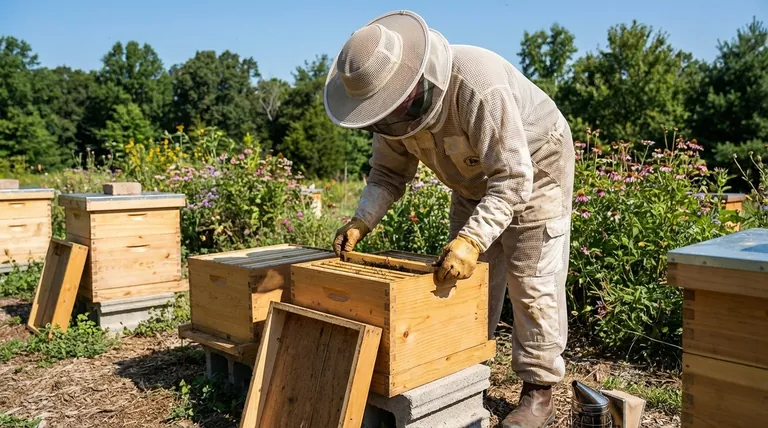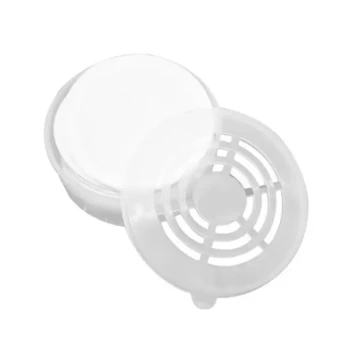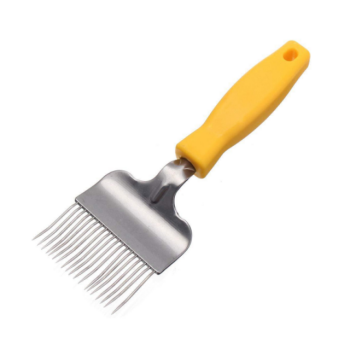When selecting a beekeeping suit, the material is the most critical factor determining your comfort and protection. The most common options are traditional fabrics like cotton, polyester, and nylon, or modern multi-layer ventilated materials designed for superior airflow. While traditional fabrics are often more affordable, ventilated suits provide a significant advantage in comfort, especially in warmer climates.
Your choice of beekeeping suit material is a direct trade-off between initial cost and long-term comfort. The core decision is not just about preventing stings, but about creating an environment where you can work calmly and effectively without overheating.

A Closer Look at Common Suit Materials
Understanding the fundamental properties of each fabric type is the first step in choosing a suit that fits your specific beekeeping environment and style.
Traditional Fabrics: Cotton, Polyester, and Nylon
These materials, often used in blends, form the basis of most entry-level and mid-range beekeeping suits. They rely on fabric thickness to prevent a bee's stinger from reaching the skin.
They are widely available and generally more affordable, making them a common choice for new beekeepers. However, their primary drawback is a lack of breathability, which can lead to significant discomfort and overheating during hive inspections on warm days.
Ventilated Fabrics: The Modern Standard for Comfort
Ventilated suits represent a significant leap forward in beekeeping apparel. They are typically constructed from a triple-layer mesh or "sandwich" fabric.
This design creates a protective air gap that is thicker than the length of a bee's stinger, effectively preventing stings. The mesh construction allows for constant airflow, drastically reducing heat buildup and keeping the beekeeper cooler and more comfortable.
Beyond the Fabric: Key Features of a Quality Suit
The material is crucial, but the overall construction determines a suit's usability and safety. Pay close attention to these components when making a decision.
Veil Design and Visibility
The veil is your window to the hive. A high-quality suit will feature a durable and clear veil that offers excellent peripheral vision and doesn't distort your view. An easy-open front veil is a highly valuable feature for convenience between hive inspections.
Zippers and Seals
Weak points in a suit are often where bees try to enter. Look for high-quality, durable YKK zippers, which are known for their reliability. Large pull rings are essential for easily zipping up while wearing gloves.
Crucially, ensure the suit has overlapping zippers and secure Velcro or elastic seals at the wrists and ankles. These features create a bee-proof barrier at all potential entry points.
Practicality and Durability
Thoughtful design enhances the beekeeping experience. Ample pockets are useful for holding hive tools and other small items. An extra-long zipper on the legs allows you to put the suit on and take it off easily without removing your boots.
Understanding the Trade-offs
Every beekeeping suit balances cost, protection, and comfort. Understanding these compromises is key to avoiding buyer's remorse.
Protection vs. Comfort
While a thick cotton suit may feel psychologically more protective, a well-designed ventilated suit offers equivalent sting protection. The primary difference is comfort. Overheating is not just a matter of discomfort; it can lead to fatigue, dehydration, and rushed, clumsy movements, which increases the risk of mistakes and stings.
Cost vs. Longevity
A basic polyester or cotton suit has a lower upfront cost. However, a premium ventilated suit is often a better long-term investment. Its superior comfort will make you more likely to enjoy beekeeping, and its higher-quality components, like better zippers and stitching, often translate to a longer lifespan.
Making the Right Choice for Your Apiary
Select your suit based on your climate, budget, and how seriously you plan to pursue beekeeping.
- If your primary focus is affordability for infrequent use: A thick, well-constructed cotton or poly-blend suit can provide adequate protection for getting started.
- If your primary focus is comfort in a moderate to warm climate: A triple-layer ventilated suit is the superior choice and a worthwhile investment for your safety and enjoyment.
- If your primary focus is maximum durability and functionality: Prioritize any suit with heavy-duty YKK zippers, reinforced seams, and secure closures at every opening.
Ultimately, the right suit is one that allows you to work calmly and confidently, focusing on your bees instead of your gear.
Summary Table:
| Material Type | Key Characteristics | Best For |
|---|---|---|
| Traditional (Cotton/Poly) | Affordable, widely available, less breathable | Beginners, cooler climates, infrequent use |
| Ventilated Mesh | Superior airflow, maximum comfort, excellent sting protection | Warm climates, frequent inspections, serious beekeepers |
Ready to Equip Your Apiary with the Best Protective Gear?
Choosing the right suit is essential for the safety and productivity of your operation. HONESTBEE supplies durable, high-performance beekeeping suits and equipment designed for the demands of commercial apiaries and distributors.
We understand that your gear must withstand daily use while keeping your team comfortable and protected. Our wholesale-focused operations ensure you get the reliable equipment you need at competitive prices.
Contact HONESTBEE today to discuss your beekeeping supply needs and request a wholesale quote. Let us help you outfit your team for success.
Visual Guide

Related Products
- Wholesales Dadant Size Wooden Bee Hives for Beekeeping
- Yellow Plastic Bucket Pail Perch for Beekeeping
- Professional Insulated Plastic Bee Hives
- Long Langstroth Style Horizontal Top Bar Hive for Wholesale
- Professional Insulated Winter Hive Wrap for Beekeeping
People Also Ask
- What are the characteristics of oil-based paint for beehives? Durability vs. Modern Practicality
- What should you do if you find an ant nest near your beehive? Essential Strategies for Hive Protection
- What types of products are available for beekeeping needs? Essential Equipment for Apiaries & Distributors
- What should beginners consider when purchasing beekeeping equipment? A Guide to Essential Starter Gear
- How often should the area under beehives be inspected and cleaned during the warm season? A Proactive Maintenance Guide



















